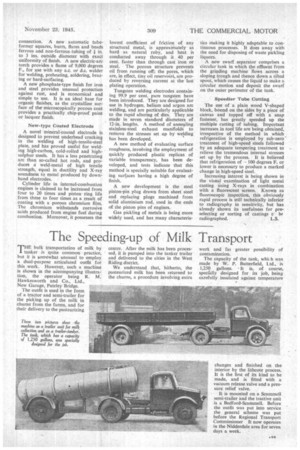The Speeding-up of Milk Transport
Page 35

If you've noticed an error in this article please click here to report it so we can fix it.
THE bulk transportation of milk by tanker is quite common practice, but it is somewhat unusual to employ a dual-put pose articulated outfit for this work. However, such a machine is shown in the accompanying illustration, the operator being R. M. Hawkesworth and Co., Ltd.,
New Garage, Pateley Bridge.
The outfit is used in the form of a tractor and semi-trailer for the picking up of the milk in churns from the farms, and for their delivery to the pasteurizing centre. After the milk has been processed, if is pumped into the tanker trailer and delivered to the cities in the West Riding district.
We understand that, hitherto, the pasteurized milk has been returned to the churns, a procedure involving extra work and fat greater possibility of contamination.
The capacity of the tank, whiL h was made by W. P. Butterfield, Ltd., is 1,250 gallons. It is, of course, specrally designed for its job, being carefully insulated against temperature changes and finished on the interior by the lithcote process. It is the first of its kind to be made, and is fitted with a vacuum release valve and a pressure relief valve.
It is mounted on a Scammell semi-trailer and the tractive unit is a Bedford-Scammell. Before the outfit was put into service the general scheme was put before the Regional Transport Commissioner It now operates in the Nidderdale area for seven days a week.




















































